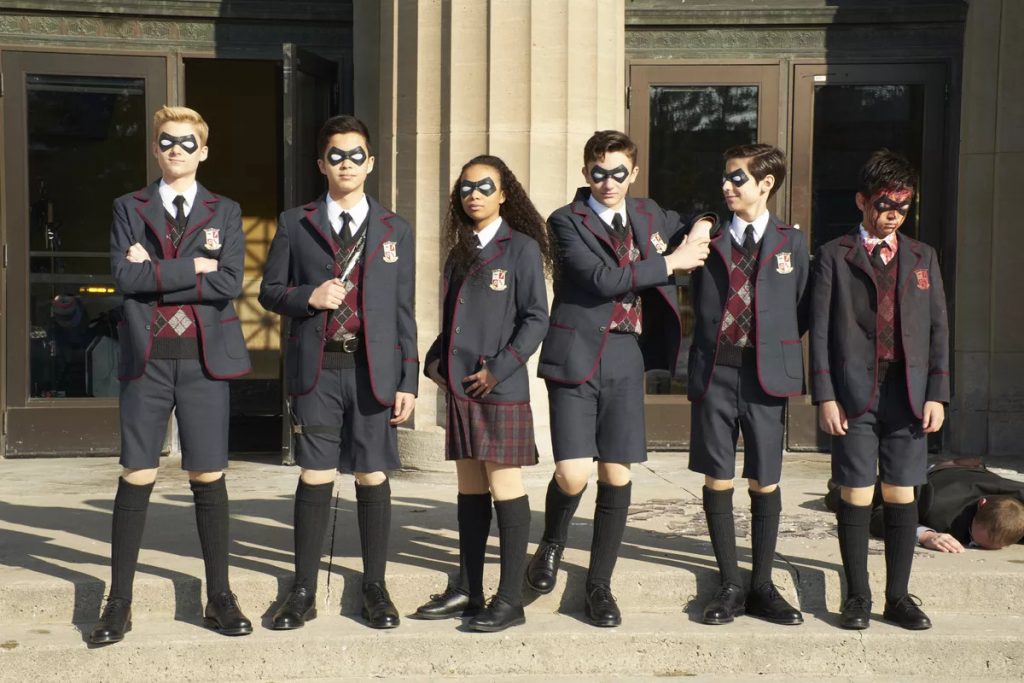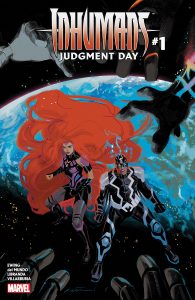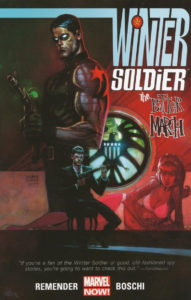
Based on the Eisner Award-winning comic book series by My Chemical Romance frontman Gerard Way and Eisner-winning artist Gabriel Bá, The Umbrella Academy revolves around a dysfunctional superhero family who part ways after a tragedy, only to be reunited after the death of their father. With the apocalypse looming, will this group of emotionally stunted, super-powered siblings be able to work together long enough to save the world?
Born under bizarre circumstances and possessing extraordinary abilities, seven children were adopted and groomed to become crime-fighters by billionaire industrialist Sir Reginald Hargreaves – in the vein of the X-Men, or the Doom Patrol. The family is composed of golden boy Luthor (Number 1), ornery loner Diego (Number 2), mind-manipulating Allison (Number 3), medium Klaus (Number 4), time-jumping Number Five, tentacle-sprouting Ben (Number 6) and the isolated Vanya (Number 7). Their upbringing was assisted by their father’s confidante Pogo, a gentle fatherly figure who happens to be an intellectually advanced chimpanzee and Grace, a caregiving robot built by Hargreaves in the mould of a chipper 1950s housewife.
Hargreaves, a man with no paternal instinct whatsoever, believed that by limiting leisure time (“You know that fun and games are restricted to Saturdays between noon and half-past noon!”) and implementing a punishing training regime, he was preparing his brood to one day save the world. If that meant occasionally locking a child in a room full of corpses, then so be it. Predictably, their transitions into adulthood do not go smoothly.
Luther, who strived to be the perfect son, is left reeling when he discovers that he’d been sidelined as team leader without ever being told. Diego, meanwhile, was brought up to believe that he’d never measure up to Luther. Anger and jealousy compel him to close himself off from the rest of the family, and prevent him from forming healthy relationships in the outside world.
Allison becomes a famous movie star with a husband and child—an apparent success. But, like many adults who were raised by abusive parents, she perpetuates the cycle of abuse. Her attempts to build her own family are blighted by lies and manipulation, in a pattern of learned behaviour; her marriage is headed for divorce.
Klaus suppresses terrible memories (the aforementioned roomful of corpses) by numbing himself with alcohol and drugs. Number Five becomes a detached, ruthless killer. Ben dies. Vanya, who appeared to have no powers and was treated like a spare part all her life, becomes a brewing storm of self-loathing, neuroses and rage. Their wounds have never had a chance to heal and when they meet again at their father’s funeral, their relationships are as combustible as ever.
Thankfully the familial angst is balanced out with a hearty dose of zany, superhero fun. A playful soundtrack, stylish cinematography and an inherent sense of humor keep things on even and entertaining keel. Music often juxtaposes action with tone (a brutal fight-to-the-death scene set to Lesley Gore’s ‘Sunshine, Lollipops and Rainbows’ comes to mind) and while the punch-ups may be fewer and further between than on other superhero shows, they’re always a thrill to watch.. It seems fitting that a story created by a famous musician would enhance itself so often through song, including a few tracks performed by Gerard Way himself.
Undoubtedly, some of the more madcap aspects of the comics wouldn’t translate well to screen (such as the battle with the Eiffel tower) but the show is at its best when it leans into quirkier elements. From the dance sequence in episode one, to the riveting ice cream truck / time-freeze scene and even Klaus’ trip to the afterlife, show runner Stephen Blackman makes bold choices that almost always pay off.
One such call is to break away from the source material when necessary. Given that there isn’t a huge amount of source material to begin with – just two volumes, with a third on the way – this really feels like the right way to go. A number of characters are created for the show, while others are fleshed out or given an entire makeover.
This first becomes evident when Number Five’s time-hopping abilities leads to his pursuit by a pair of temporal assassins called Hazel and Cha-Cha. In the comics, these characters are never seen without their signature bubblegum-colored mascot-heads and are characterized strictly as sadistic, sugar-loving maniacs. The duo we meet in the show retain some of those qualities (Cha-Cha still loves killing people, Hazel still loves donuts) but are given clashing ideals and attitudes toward their job, which leads to some of the show’s strongest moments.
Another welcome change is the inclusion of Ben, whose death precipitated the breakup of The Umbrella Academy as a team. Unbeknownst to most of his siblings, he’s spent his afterlife shadowing Klaus. It’s an effective way to illustrate Klaus’ power, and Klaus is such a drug-addled disaster that it seems plausible that his dead brother’s spirit would attempt to babysit him. This particular character development is truly a pleasure to watch.
Some embellishments work better than others, especially where romantic sub-plots are concerned. The May-December romance between Hazel and donut shop owner Agnes is surprisingly sweet; however, the invention of Detective Patch as Diego’s former flame feels a bit tacked on and unnecessary. In this instance, it might have been better to stick to the source and develop Diego’s close bond with Vanya.
In an age where superhero shows have broken through into the mainstream and become the norm, The Umbrella Academy sets itself apart by allowing family dynamics to take center stage rather than special abilities. Like any good adaptation, it retains the spirit of the original while taking necessary risks for the benefit of the show’s experience. Moreover, it does exactly what any adaptation of The Umbrella Academy should do and deconstructs the genre, to the tune of a jaunty pop song.


